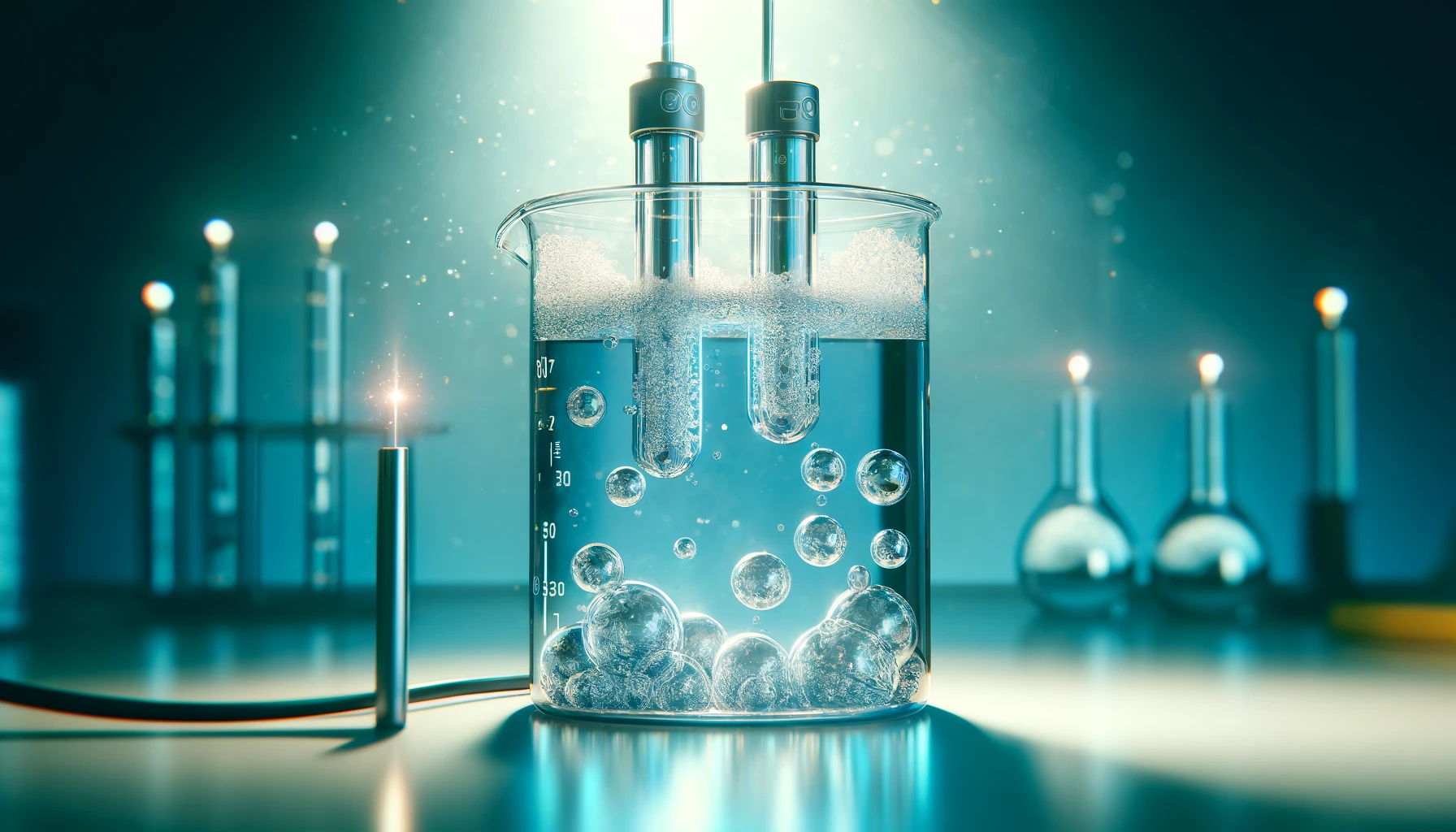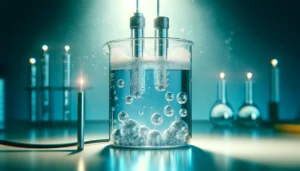Chemical effects of electric current : Introduction
Electricity lights our homes and powers our devices, but it has more tricks up its sleeve! Did you know electricity can split water, create gases from liquids, or even coat objects with a shiny layer of metal? It all comes down to the power of tiny charged particles called electrons.
1. Conducting Solutions: The Pathway for Moving Electrons
- A Special Kind of Liquid: Some liquids, especially those containing acids, bases, or salts, are excellent conductors of electricity. This is because they break down into tiny charged particles called ions.
- Meet the Ions: Imagine ions as delivery trucks, some carrying a positive charge, others negative. These ions transport the electric current through the liquid.
- The Movers and Shakers: These moving ions allow electricity to cause amazing chemical reactions!
2. Where the Magic Happens: Reactions at the Electrodes
- Electrodes: The Electric Gateways: Electrodes are the metal rods or plates dipped into the conducting solution. They act as entry and exit points for the electric current.
- Opposites Attract:
- The Positive Side (Anode): Negatively charged ions (anions) are drawn to the anode. Here, they can lose electrons, creating new substances!
- The Negative Side (Cathode): Positively charged ions (cations) are attracted to the cathode. Here, they gain electrons, resulting in a different chemical transformation!
3. Electrolysis: Using Electricity to Break Things Down
- What is Electrolysis? Electrolysis uses electric current to break down compounds into simpler substances.
- The Amazing Disappearing Water Trick: Passing electricity through water splits it into hydrogen gas (at the cathode) and oxygen gas (at the anode). This process produces hydrogen, a clean fuel for rockets and some cars!
- More Than Just Water: Electrolysis is crucial for extracting metals from their ores, manufacturing many important chemicals, and purification processes.
4. Electroplating: Giving Metals a Shiny New Look
- What is Electroplating? This process uses electricity to coat a metal object with a thin layer of a different metal. This is how jewelry gets its shine and car parts get their protective chrome coating!
- How Electroplating Works:
- Object Makeover: The object to be plated becomes the cathode.
- The Metal Spa: The metal used for coating is the anode.
- The Magic Dip: Both are dipped in a special bath containing the metal coating.
- Electric Makeover: When a current flows, metal ions from the anode are attracted to the object, forming a super-thin, even coating.
5. The Importance of Chemical Effects
- Industry Powerhouse: Electrolysis and electroplating are used on a huge scale for extracting pure metals, producing essential chemicals, and protecting objects from corrosion.
- Everyday Shine: Cutlery, jewelry, and many shiny appliances owe their look and durability to electroplating.
- Batteries: Stored Electricity Batteries work using similar chemical reactions caused by electricity, allowing us to store and use energy on the go!
Extra Spark: Fun Facts and Things to Think About
- Colorful Chemistry: Solutions often change color during these processes as new chemicals are formed – nature’s way of showing us there’s a reaction happening!
- Beyond Beauty: Electroplating makes objects prettier, but also stronger, prevents rusting, or can even improve their ability to conduct electricity.
- Safety First: When working with electricity and chemicals, always wear goggles, gloves, and have adult supervision.
Conclusion
Electricity isn’t just about powering our devices; it’s a scientific superpower that can transform materials. Through electrolysis and electroplating, electricity becomes a chemist’s tool, splitting compounds, creating new substances, and giving objects a makeover. So, the next time you see bubbles rising in a strange liquid connected to wires or admire a shiny gold necklace, remember the wonders of electricity and the hidden dance of charged particles!








Leave a Reply